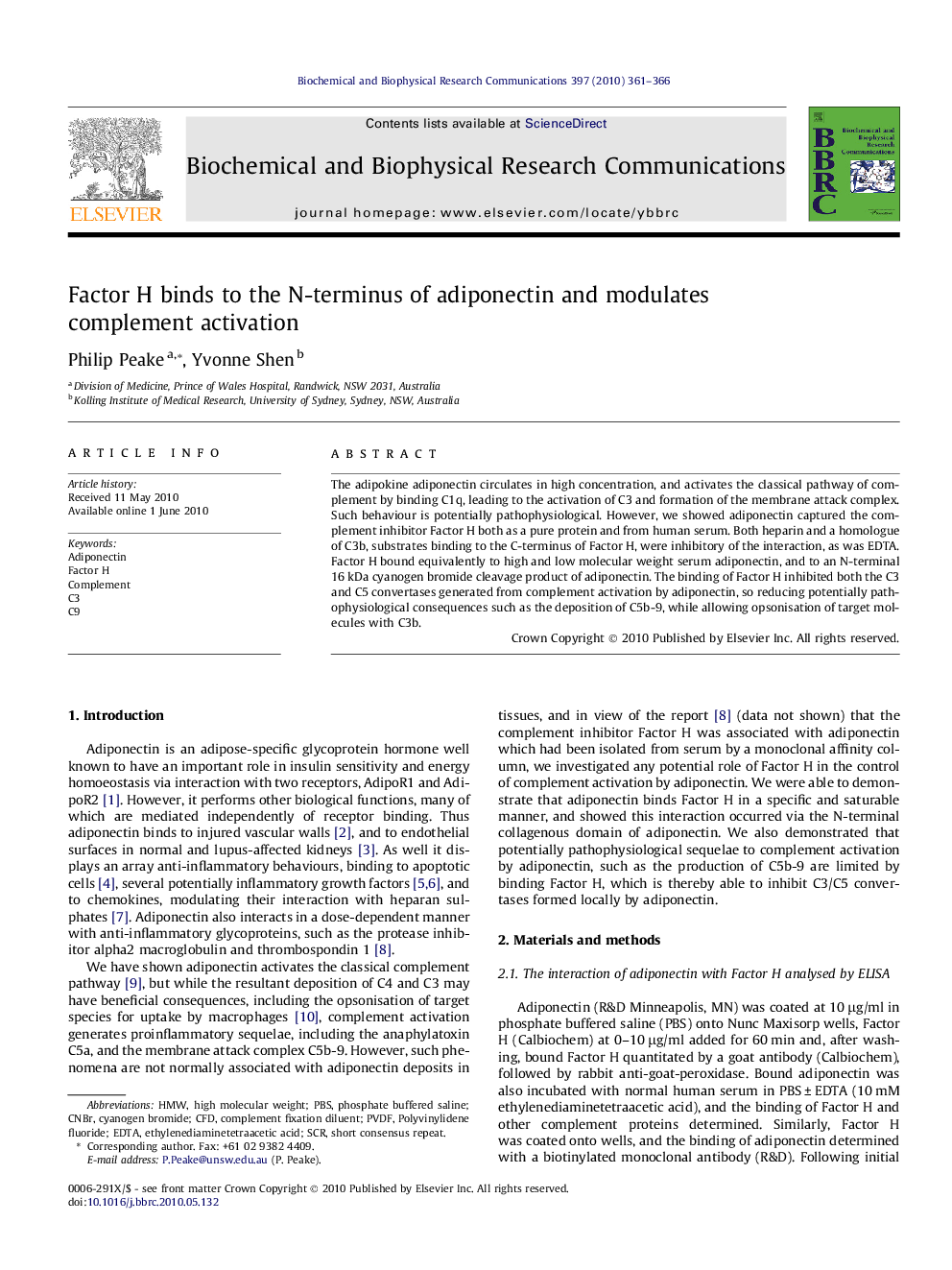| Article ID | Journal | Published Year | Pages | File Type |
|---|---|---|---|---|
| 1931728 | Biochemical and Biophysical Research Communications | 2010 | 6 Pages |
The adipokine adiponectin circulates in high concentration, and activates the classical pathway of complement by binding C1q, leading to the activation of C3 and formation of the membrane attack complex. Such behaviour is potentially pathophysiological. However, we showed adiponectin captured the complement inhibitor Factor H both as a pure protein and from human serum. Both heparin and a homologue of C3b, substrates binding to the C-terminus of Factor H, were inhibitory of the interaction, as was EDTA. Factor H bound equivalently to high and low molecular weight serum adiponectin, and to an N-terminal 16 kDa cyanogen bromide cleavage product of adiponectin. The binding of Factor H inhibited both the C3 and C5 convertases generated from complement activation by adiponectin, so reducing potentially pathophysiological consequences such as the deposition of C5b-9, while allowing opsonisation of target molecules with C3b.
